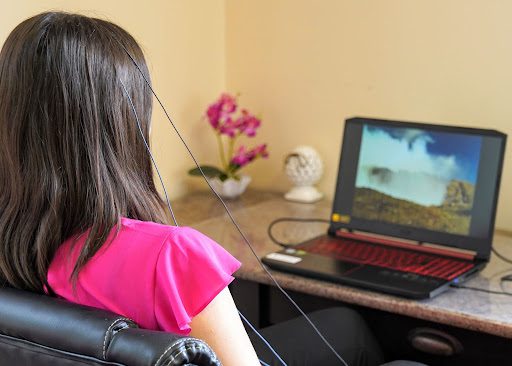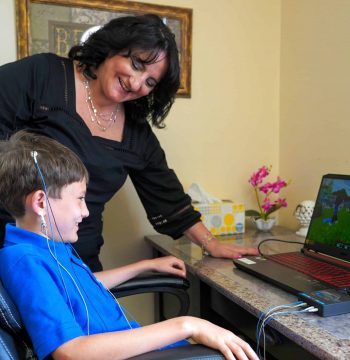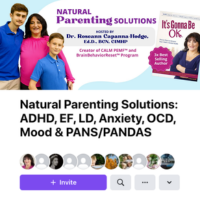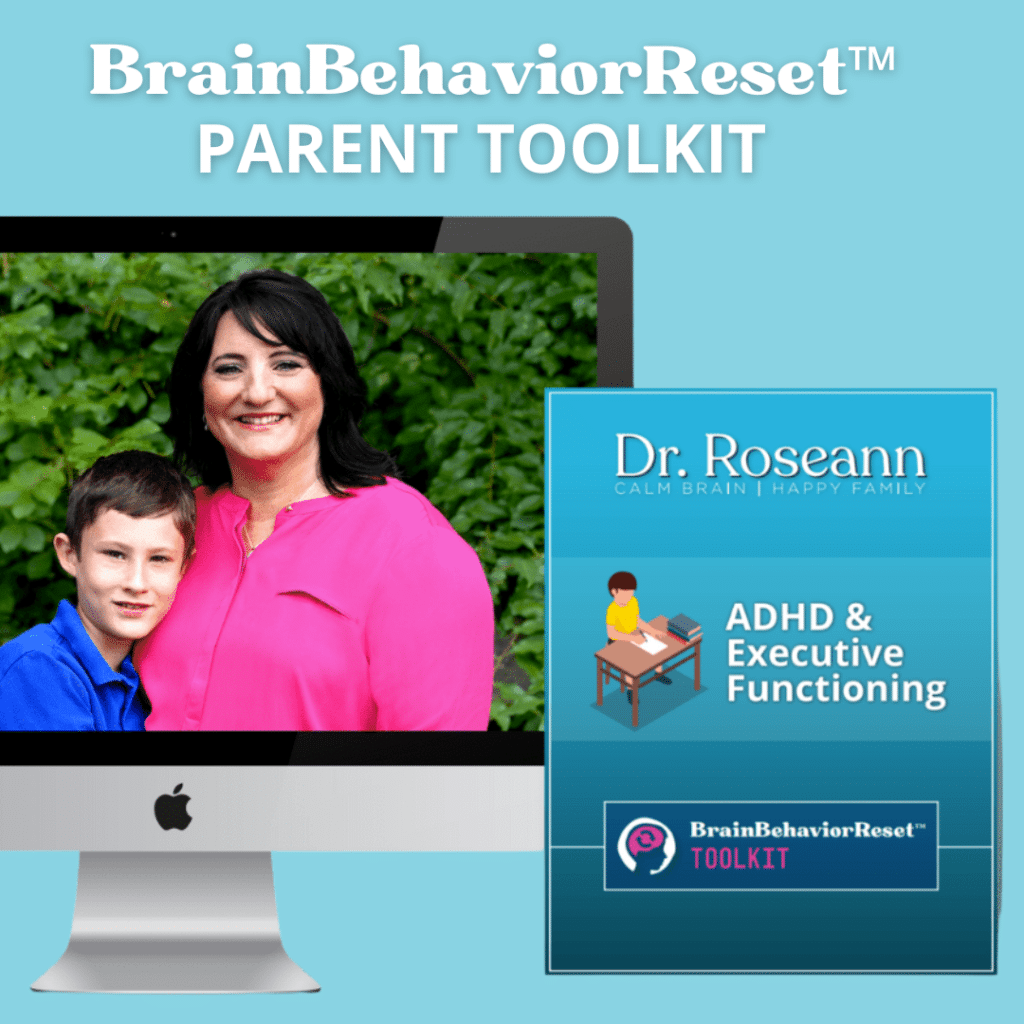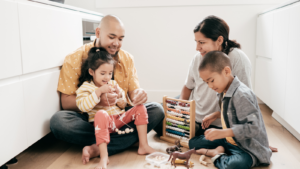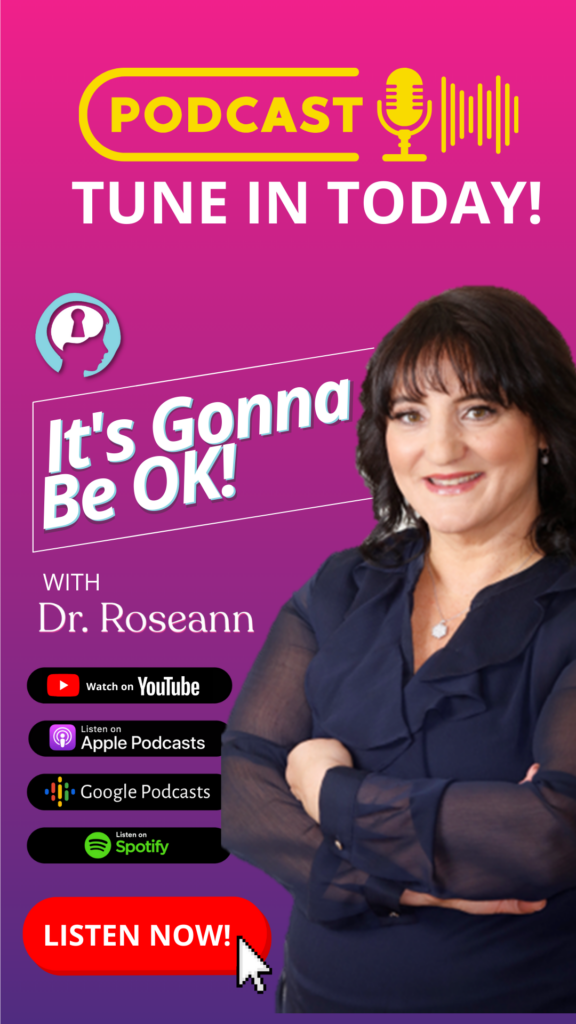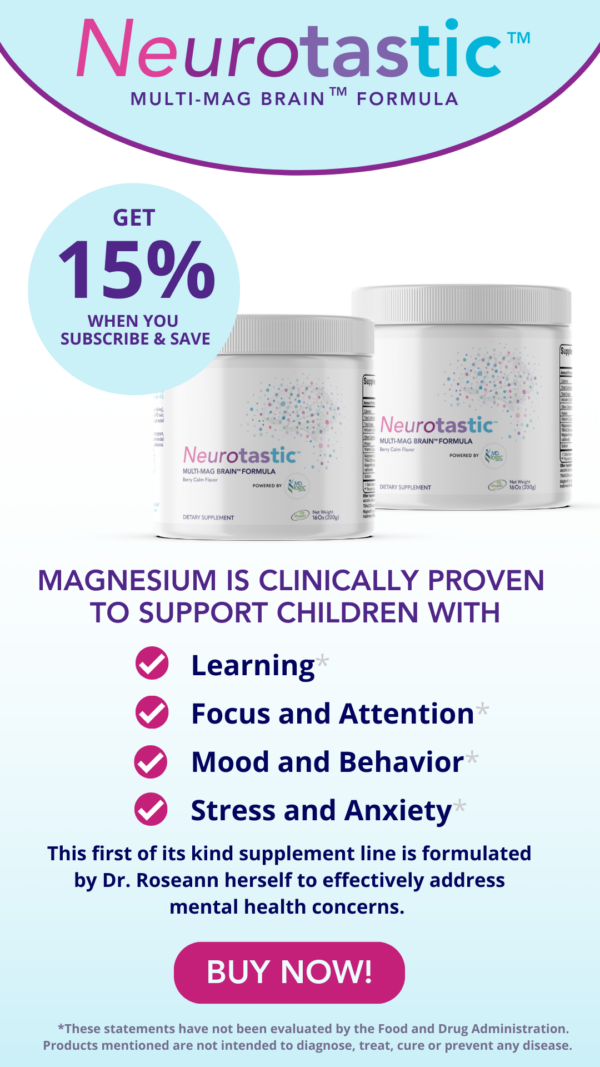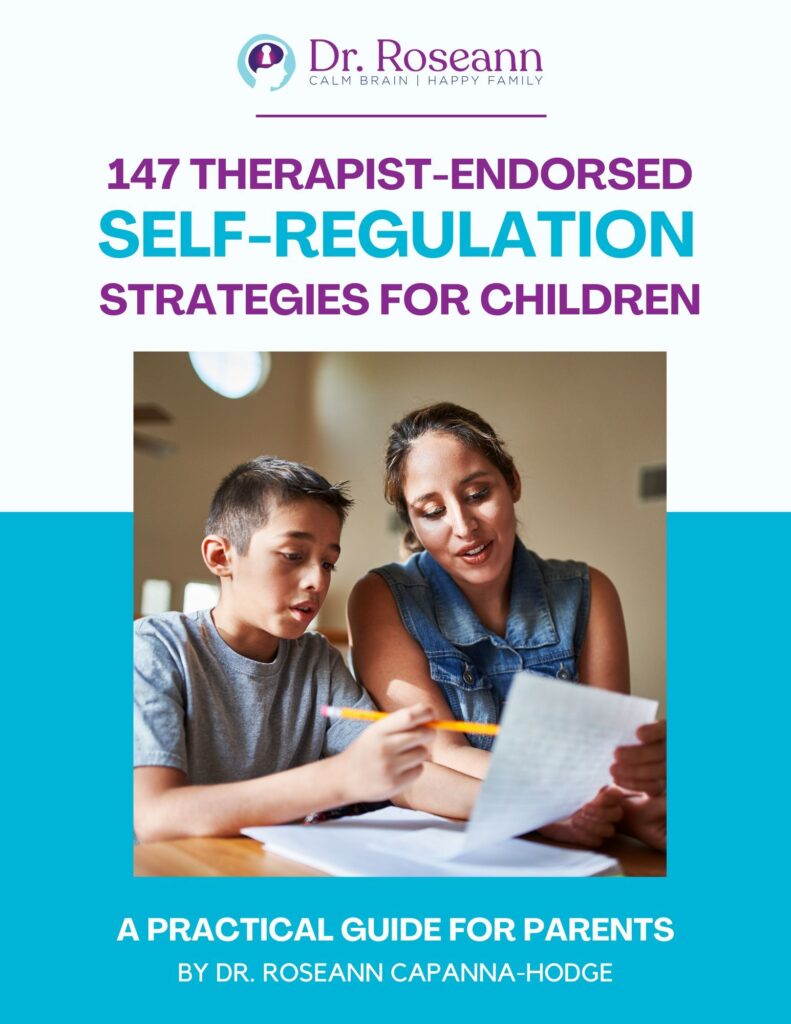PANS, PANDAS and autoimmune encephalopathy (AE) are three separate conditions that have similar behaviors and issues that can be devastating for the child and family. The behaviors and clinical issues that come along with PANS, PANDAS, and AE are scary especially when information, providers and treatment is scarce. Parents are left to their own devices to figure out what is causing their child’s often frightening behavior, find providers and put together their own treatment plans.
Eric’s Story
Eric was a middle schooler who had a history of multiple diagnoses, ODD, anxiety, mood disorder, and ADHD. You name a medication, they tried it and each had its own disastrous effect on Eric’s behavior and more importantly, each medication failure robbed his self-esteem and hope that things could ever get better.
His parents knew that there had to be something other than psychiatric medication and talk therapy because neither worked or seemed to address what was really causing his behavior. They scoured the internet, joined parent Facebook groups, and listened to podcasts.
Listening to a podcast that I was a guest on, Dan and Joyce heard for the first time about PANS and PANDAS and for the first time heard me talking about what seemed like exactly what Eric and they were going through. They quickly made a virtual appointment with me and when we put the pieces of the puzzle together, it was clear that Eric’s behavior changed in elementary school after his classroom had a mold remediation and the entire class had pneumonia multiple times. After that year, Eric began to have “attention problems” and was diagnosed with ADHD even though he had no symptoms before age seven. Then “behavioral problems” began; Eric started having meltdowns and rages, as well as high anxiety. Eric got diagnosed with Oppositional Defiant Disorder and Disruptive Mood Disorder and medication was prescribed. At first, his parents thought it was helping but then the antianxiety medication triggered Obsessive and Compulsive Disorder. And that is when Eric really started to fall apart.
The friends he had vanished, he couldn’t keep up at school, and he was a hot mess at home. By the time he got to me, the family was just about broken down. With the correct diagnosis of PANS, I designed a treatment plan for Eric that addressed the root causes and we focused on regulating his nervous system, so his body could use it’s resources to address the infections and toxins and repair the “damage” from years of letting these infections run amuck and toxins from the mold and psychiatric medication.
Neurofeedback was a big part of Eric’s success and once his nervous system could regulate, he was able to address his obsessive and angry behaviors. Each obstacle was able to be addressed and over time was able to get back to being himself.
How Do You Treat PANS, PANDAS, and AE?
There are many triggers for PANS, PANDAS and AE but Lyme Disease and Tick-borne infection is one of the most common sources. For more than two decades, I have supported hundreds of kids and adults affected by Lyme Disease and tick-borne illness. It is an awful disease because of the absolute ignorance of medical and mental health providers in identifying and treating the disease.
Treatment for PANS, PANDAS, and AE involves a combination of treatment of the infection and/or toxin, reduction of inflammation, and behavioral/ psychological treatment. Integrative treatments should always be part of the treatment plan. Without regulation of the nervous system, the body can’t heal itself, so our kids with PANS, PANDAS, and AE are at an automatic disadvantage because they are just so agitated.
As a specialist in PANS, PANDAS, AE, and Lyme, we use our trademarked process, the BrainBehaviorReset™ Method to regulate the nervous system, so the body can reset and regulate. Neurofeedback is a safe and effective tool that is designed to calm the nervous system and improve attention and cognitive functioning and is often part of treatment protocol. When it comes to PANS/PANDAS, it is important to work with a highly skilled neurofeedback provider because it requires a tremendous amount of experience to understand how to regulate the brain of someone impacted by infection or toxins and that is what we do everyday at our center and with people virtually all over the world.
Ask Me Anything Neurofeedback with Dr. Roseann
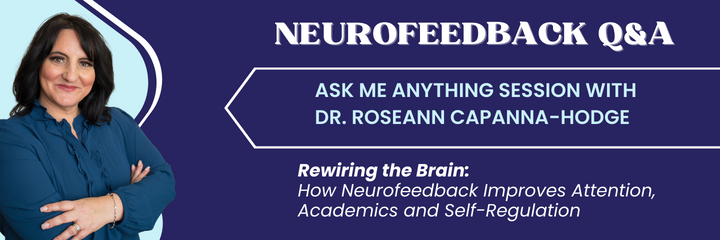
What is Neurofeedback and How Can It Help PANS and PANDAS?
Neurofeedback is a tool that helps the brain regulate so a person's behavior, thoughts and attention can be regulated. Through the use of computer technology, the brain gets reinforcing feedback, which teaches the brain how to self-regulate brain waves so a person can focus, be calm, and process more quickly.
After an assessment with Dr. Roseann, she designs a protocol to address dysregulated PANS/PANDAS brain states. A session involves computers giving visual and auditory feedback to the subconscious brain everytime it gets into a healthy rhythm and over time, the brain learns to stay in that optimal, regulated state. Neurofeedback addresses not only dysfunction over brain structures, such as impulse control and executive functioning in the frontal lobes, it gets the brain’s communication system back online so one can pay attention, calm racing thoughts, and not behaviorally overreact or under-react to stimuli. Neurofeedback not only impacts brain waves but it also influences neurotransmitter activity and calms that nervous system, so a child can slow down enough to learn new ways of responding. That means emotional wellness and stability for the child and family. As a PANS mom myself, I know how disruptive (that's putting it mildly!) PANS can be to every aspect of life: home, school, friendships, sibling relationships, and parenting.
Neurofeedback is a powerful tool that addresses rigidity, rage, and emotional and behavioral reactivity. Every behavior and issue associated with PANS and PANDAS is awful but these behaviors are the ones that stop every kid and family in their tracks. Alleviating these behaviors safely and effectively is paramount for healing and the mental health of the whole family.
Common PANS/PANDAS Symptoms Improved with Neurofeedback
Neurofeedback research supports the efficacy of treating a variety of issues and clinical symptoms. Dr. Roseann specializes in PANS, PANDAS, AE and Lyme and uses neurofeedback, biofeedback, and PEMF to address many related issues with her trademarked BrainBehaviorReset™ Method.
Common PANS/PANDAS issues that Dr. Roseann addresses with Neurofeedback:
- Rage and anger
- Tics
- Obsessions and compulsions
- Restricted eating
- Anxiety
- Separation anxiety
- Mood and emotional lability
- Agitation
- Impulse control
- Withdrawn behaviors
- Attention
- Executive functioning
- Brain fog
- Learning, memory, and processing
- Bedwetting
- Sleep disturbance
- Chronic Pain
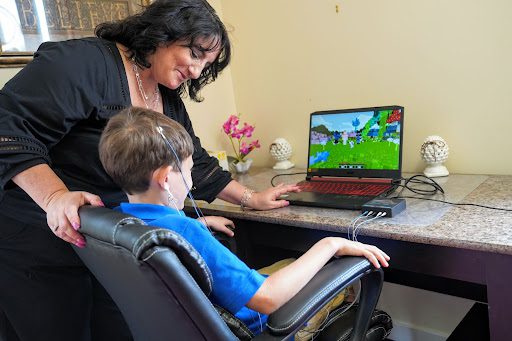
Dr. Roseann during a live neurofeedback session
How do I Find a Neurofeedback Provider Who Is PANS, PANDAS, and AE Expert?
Dr. Roseann is the leading world expert in neurofeedback for those with PANS, PANDAS, AE or Lyme and tick-borne disease. She is a sought after speaker and trainer of other professionals on how to work with those with PANS, PANDAS, and Lyme. We offer virtual neurofeedback that can be done in the comfort of your home no matter where you are in the world. So when it comes to choosing a neurofeedback prover, choose the best in the world, Dr. Roseann!
You just need to hop on a call with one of our client specialists or email us to learn more about how we can help your child with PANS/PANDAS or AE and restore calm to your family.
Always remember… “Calm Brain, Happy Family™”
Are you looking for SOLUTIONS for your struggling child or teen?
Dr. Roseann and her team are all about solutions, so you are in the right place!
There are 3 ways to work with Dr. Roseann:
You can get her books for parents and professionals, including: It’s Gonna Be OK™: Proven Ways to Improve Your Child’s Mental Health, Teletherapy Toolkit™ and Brain Under Attack: A Resource For Parents and Caregivers of Children With PANS, PANDAS, and Autoimmune Encephalopathy.
If you are a business or organization that needs proactive guidance to support employee mental health or an organization looking for a brand representative, check out Dr. Roseann’s media page and professional speaking page to see how we can work together.
Dr. Roseann is a Children’s Mental Health Expert and Therapist who has been featured in/on hundreds of media outlets including, CBS, NBC, FOX News, PIX11 NYC, The New York Times, The Washington Post,, Business Insider, USA Today, CNET, Marth Stewart, and PARENTS. FORBES called her, “A thought leader in children’s mental health.”

She is the founder and director of The Global Institute of Children’s Mental Health and Dr. Roseann Capanna-Hodge. Dr. Roseann is a Board Certified Neurofeedback (BCN) Practitioner, a Board Member of the Northeast Region Biofeedback Society (NRBS), Certified Integrative Medicine Mental Health Provider (CMHIMP) and an Amen Clinic Certified Brain Health Coach. She is also a member of The International Lyme Disease and Associated Disease Society (ILADS), The American Psychological Association (APA), Anxiety and Depression Association of America (ADAA) National Association of School Psychologists (NASP), International OCD Foundation (IOCDF) International Society for Neurofeedback and Research (ISNR) and The Association of Applied Psychophysiology and Biofeedback (AAPB).
© Roseann-Capanna-Hodge, LLC 2023
Disclaimer: This article is not intended to give health advice and it is recommended to consult with a physician before beginning any new wellness regime. *The effectiveness of diagnosis and treatment vary by patient and condition. Dr. Roseann Capanna-Hodge, LLC does not guarantee certain results.

